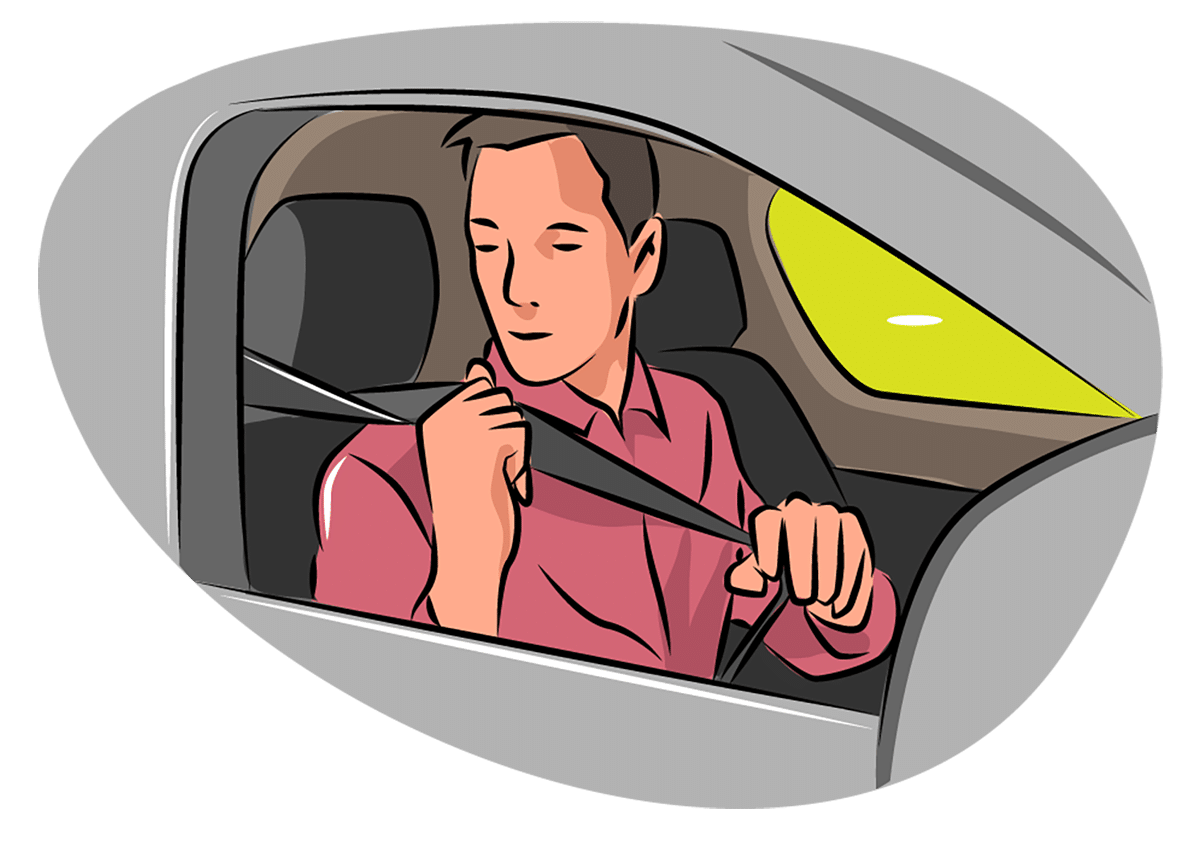Why Seat Belts Are Still Important
For decades, seat belt laws have been in place all across Canada. For the majority of people, they will comply and wear them, whether they are the driver or the passenger. However, there seems to be a small minority of Canadians who fail to wear their seat belt. Is it because they forget? Perhaps they were raised without wearing them, and changing the habit is tough. And then some don’t believe seat belts will do anything to help them. It’s time to clear the air with seat belt use.

Seat Belt Laws
Laws are designed to help keep us safe. Driving laws are no exception. Seat belt laws sprang up across Canada starting in 1976 in Ontario and Quebec and continued until 1991 in the Yukon. The fines vary depending on the province or territory, but they start at $75 in the Yukon and go to $299.65 in Manitoba. These fines are the base fine, but the cost will increase after adding administrative fees. Not only will you pay a fine for failing to wear a seat belt, most of Canada also associates demerit points to this infraction, except for Alberta and British Columbia. The points start at 2 in most provinces but can go to 3 in PEI, Quebec, and Saskatchewan and 4 points in the Yukon. These points are never a good thing. The more points you have, the more your car insurance will increase. Again, since it will cost you, you might as well wear a seat belt. It can save you money…among other things.
Usage of Seat Belts
Across Canada, the usage of seat belts is over 90%. That sounds like a perfect number, but think about the population. Let’s use Ontario as an example. There is approximately 96% compliance with seat belt wearing in the province. With a population of approximately 15 million people, that means approximately 600,000 people do not wear their seat belts. A high number still fail to follow the seat belt laws. Are you one of them? It’s time to learn why everyone should wear a seat belt.
Seat Belt Keeps You Safe
The seat belt keeps you in the seating compartment. When an object in motion stops quickly and immediately, anything that is not restrained will continue to move forward. This would include any occupants inside of the vehicle. The driver is responsible for ensuring their passengers are safe from the beginning to the end of the trip. Above all, they should also be responsible for ensuring their safety as they ride in your vehicle. If the driver loses control of the vehicle because of a lack of seat belts, what would happen to their passengers? What would your family and friends do if you were thrown from the vehicle during a collision or sudden swerve and injured or killed? It can become a selfish opinion if a driver says they won’t wear their seatbelt because of their opinion and lack of facts or if they feel they can brace themselves by holding onto the steering wheel instead of wearing a seat belt.
The Statistics
Statistics show that state seatbelts are not used as often in rural areas compared to urban areas. Some may believe that since there is less traffic, they are at less risk of dangerous driving maneuvers and that a seat belt will save them. Or is it because some of those drivers are lazy? Regardless of their reasons, it will only take a sudden stop or a sudden swerve to cause the driver to lose their seating position. This may mean a loss of steering and vehicle control.
What About Short Trips?
Here’s a scenario to help explain the need for a seat belt, even during short trips. Suppose you encounter a situation where you must suddenly swerve to the left to avoid a vehicle entering your path from the right or if a child or cyclist suddenly moves into your path from the right. Without wearing a seat belt, that sudden move will cause your body to quickly move across the seating compartment toward the vehicle’s passenger side. Wearing a seat belt will keep you upright in a good driving position. This driving position will allow you to see where to aim the vehicle. It will also allow you to safely steer toward space to avoid what you had originally swerved for.
Seat belts for Passengers
Let’s talk, passengers. You could still be affected if you decided to wear your seat belt but did not ensure your passengers wore their seat belts. Let’s say your front seat passenger refused to wear their seat belt. They are of an age where they would have to pay their fine if ticketed. What’s the big deal? The big deal is they now can become a projectile and be thrown across the seat – across your arms – causing you to lose control of the vehicle if you had to swerve to your right quickly and suddenly. You would not be able to regain or maintain steering control and possibly not be able to see where you want the car to go. All this is happening quickly without much warning. Now, what about your backseat passengers? Is it a big deal if they do not wear their seat belt? They, too, can become a projectile if you have to brake quickly and hard. That forward motion can cause them to fly toward the front seat, and if they are sitting directly behind you, they can seriously affect your ability to control the vehicle, even if your seat belt is on.
Some people will wear a seat belt to avoid paying a fine. Some will wear a seat belt to reduce any injuries during a collision. Others may wear it so rescuers can safely locate their body after a severe collision. Others, so they can maintain control of their vehicle, as mentioned earlier. Whichever your reason, wear it. You can thank me later.